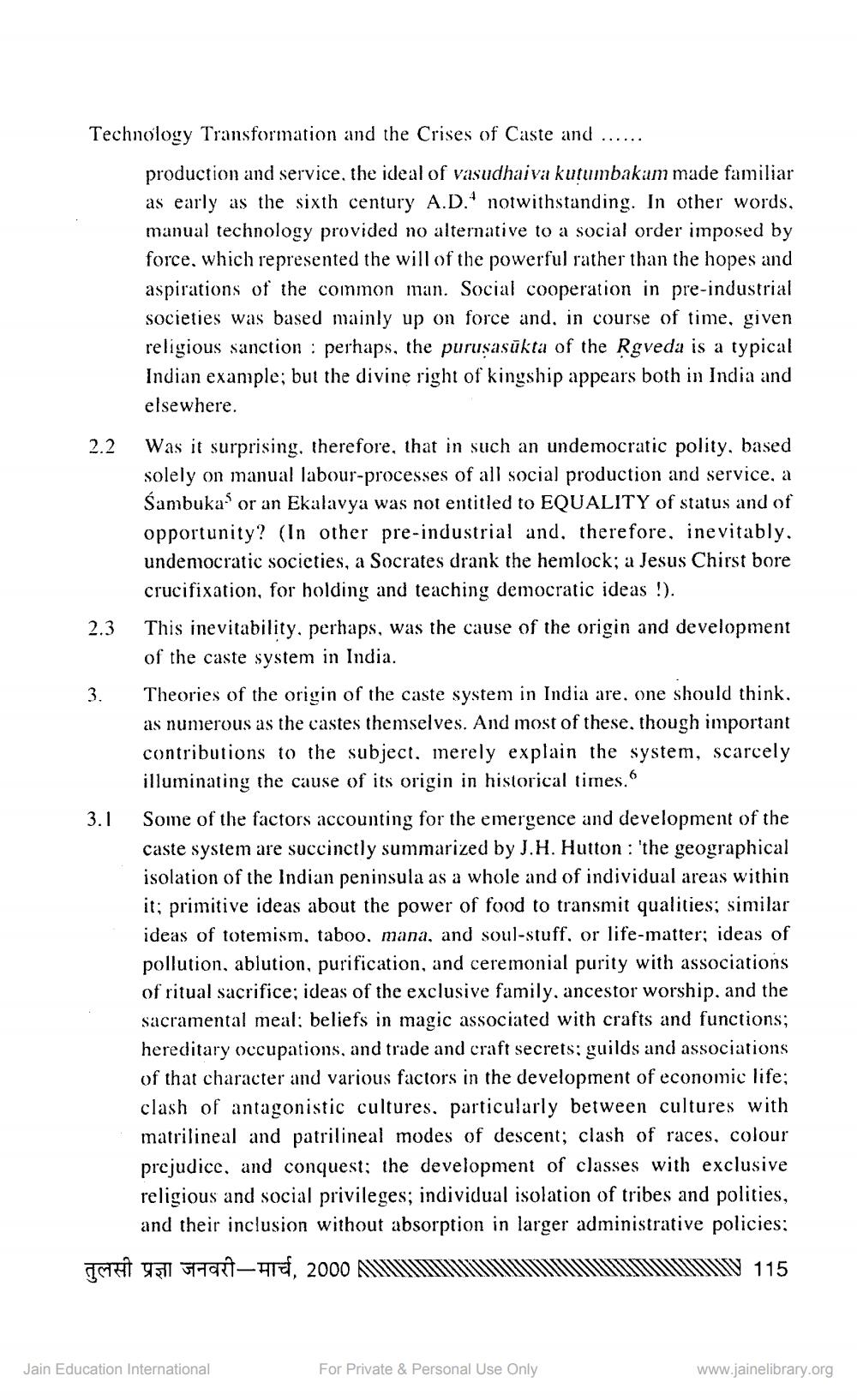________________
Technology Transformation and the Crises of Caste and
production and service, the ideal of vasudhaiva kutumbakam made familiar as early as the sixth century A.D. notwithstanding. In other words, manual technology provided no alternative to a social order imposed by force, which represented the will of the powerful rather than the hopes and aspirations of the common man. Social cooperation in pre-industrial societies was based mainly up on force and, in course of time, given religious sanction: perhaps, the puruṣasukta of the Rgveda is a typical Indian example; but the divine right of kingship appears both in India and elsewhere.
2.2
2.3
3.
Was it surprising, therefore, that in such an undemocratic polity, based solely on manual labour-processes of all social production and service, a Śambuka or an Ekalavya was not entitled to EQUALITY of status and of opportunity? (In other pre-industrial and, therefore, inevitably. undemocratic societies, a Socrates drank the hemlock; a Jesus Chirst bore crucifixation, for holding and teaching democratic ideas!).
3.1
This inevitability, perhaps, was the cause of the origin and development of the caste system in India.
Theories of the origin of the caste system in India are, one should think. as numerous as the castes themselves. And most of these, though important contributions to the subject. merely explain the system, scarcely illuminating the cause of its origin in historical times."
Some of the factors accounting for the emergence and development of the caste system are succinctly summarized by J.H. Hutton: 'the geographical isolation of the Indian peninsula as a whole and of individual areas within it; primitive ideas about the power of food to transmit qualities; similar ideas of totemism, taboo, mana, and soul-stuff, or life-matter; ideas of pollution, ablution, purification, and ceremonial purity with associations of ritual sacrifice; ideas of the exclusive family, ancestor worship, and the sacramental meal: beliefs in magic associated with crafts and functions; hereditary occupations, and trade and craft secrets; guilds and associations of that character and various factors in the development of economic life; clash of antagonistic cultures. particularly between cultures with matrilineal and patrilineal modes of descent; clash of races, colour prejudice, and conquest; the development of classes with exclusive religious and social privileges; individual isolation of tribes and polities, and their inclusion without absorption in larger administrative policies: तुलसी प्रज्ञा जनवरी-मार्च, 2000
115
Jain Education International
For Private & Personal Use Only
www.jainelibrary.org




